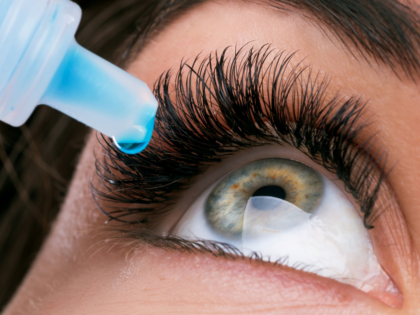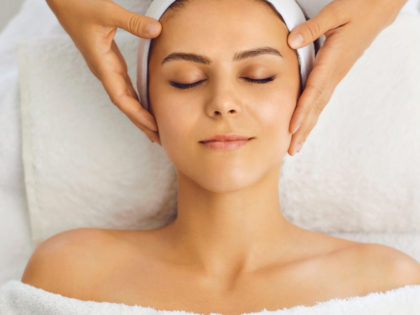“From Ubtan to Abhyanga: The Ayurvedic Rituals for Festive Glow”

The festive season brings with it joy, celebration, and the desire to look your best. In Ayurveda, beauty is not just skin-deep; it is a reflection of inner health and harmony. Ayurvedic beauty rituals focus on natural, holistic care that rejuvenates the body and mind. Two timeless practices, Ubtan and Abhyanga, have been used for centuries to achieve glowing skin and a radiant appearance during festive times.
In this blog, we’ll explore the significance of these ancient rituals, their benefits, and how to incorporate them into your beauty routine.
What is Ubtan? The Natural Skin Brightener
Ubtan is a traditional Ayurvedic paste made from natural ingredients such as herbs, grains, pulses, and essential oils. It is widely used as a cleanser, exfoliant, and skin brightener. Ubtan has been a part of Indian beauty rituals for centuries, especially during weddings and festivals.
Key Ingredients in Ubtan
- Gram Flour (Besan): Acts as a gentle exfoliant and removes dead skin cells.
- Turmeric (Haldi): Known for its anti-inflammatory and antibacterial properties, it imparts a natural glow.
- Sandalwood Powder (Chandan): Provides a cooling effect and reduces blemishes.
- Rose Water: Hydrates the skin and maintains pH balance.
- Milk or Yogurt: Moisturizes and nourishes the skin.
Benefits of Using Ubtan
- Natural Exfoliation: Ubtan gently removes dirt, impurities, and dead skin cells, revealing fresh and radiant skin.
- Brightens Skin Tone: Ingredients like turmeric help even out the complexion, giving the skin a natural glow.
- Detoxifies Skin: Removes toxins and unclogs pores, leaving the skin refreshed.
- Reduces Tan: Ubtan helps in reducing sun-induced pigmentation and tanning.
- Anti-Aging Properties: Regular use can delay the signs of aging by improving skin texture and elasticity.
How to Use Ubtan for a Festive Glow
DIY Ubtan Recipe for Glowing Skin:
- 2 tablespoons of gram flour (besan)
- 1 teaspoon of turmeric powder
- 1 tablespoon of sandalwood powder
- 1 tablespoon of rose water or milk
- A few drops of almond oil
Method:
- Mix all the ingredients to form a smooth paste.
- Apply the paste evenly on your face and body.
- Let it sit for 10-15 minutes until it dries slightly.
- Gently scrub in circular motions while rinsing with lukewarm water.
Tip: Use this Ubtan twice a week during the festive season for best results.
What is Abhyanga? The Art of Self-Massage
Abhyanga is the practice of Ayurvedic self-massage using warm, herbal oils. It is a deeply nourishing and grounding ritual that promotes physical health and mental well-being. The word “Abhyanga” translates to “oil massage,” and it plays a crucial role in Ayurvedic beauty and wellness routines.
Types of Oils Used in Abhyanga
- Sesame Oil: Known for its warming properties, it deeply nourishes the skin and tissues.
- Coconut Oil: Cooling and moisturizing, ideal for those with sensitive or dry skin.
- Almond Oil: Rich in Vitamin E, it softens the skin and enhances complexion.
- Neem Oil: Known for its antibacterial properties, it helps with acne and skin irritation.
Benefits of Abhyanga
- Improves Circulation: The massage stimulates blood flow, delivering oxygen and nutrients to skin cells.
- Detoxifies the Body: Helps in removing toxins from the body through lymphatic drainage.
- Enhances Skin Glow: Regular oil massage improves skin texture, making it soft and radiant.
- Calms the Nervous System: Abhyanga is known to reduce stress and promote relaxation.
- Strengthens Muscles and Joints: It improves muscle tone and lubricates the joints, enhancing flexibility.
How to Perform Abhyanga at Home
- Warm the Oil: Heat the oil gently until it is warm but not hot.
- Start with the Scalp: Massage the oil into your scalp using your fingertips in circular motions.
- Move to the Face: Gently massage your face, focusing on the forehead, cheeks, and jawline.
- Massage the Body: Start from the feet and work your way up, using long strokes on limbs and circular motions on joints.
- Let the Oil Absorb: Allow the oil to absorb into the skin for 15-30 minutes before taking a warm shower.
Tip: Perform Abhyanga in the morning before your bath for optimal rejuvenation.
Combining Ubtan and Abhyanga: A Complete Festive Ritual
For a truly luxurious experience during the festive season, combine Ubtan and Abhyanga into a single ritual. Here’s how:
- Step 1: Abhyanga Self-Massage:
Begin with a warm oil massage to relax the body and prepare the skin for cleansing. - Step 2: Ubtan Application:
After the massage, apply Ubtan to your face and body. The oil from the massage will help the Ubtan glide smoothly, enhancing the exfoliation process. - Step 3: Rinse and Relax:
Rinse off the Ubtan with lukewarm water while massaging gently to remove dead skin cells. - Step 4: Moisturize:
Follow up with a natural moisturizer or aloe vera gel to lock in hydration and keep the skin supple.
Final Thoughts
Ayurvedic rituals like Ubtan and Abhyanga are more than just beauty treatments—they are acts of self-care that promote holistic wellness. These timeless practices connect you to the wisdom of nature and help you achieve a radiant, festive glow from the inside out.
This festive season, embrace these Ayurvedic traditions and experience the joy of natural beauty, inner peace, and vibrant health. Your skin will thank you, and your spirit will shine brighter than ever.





